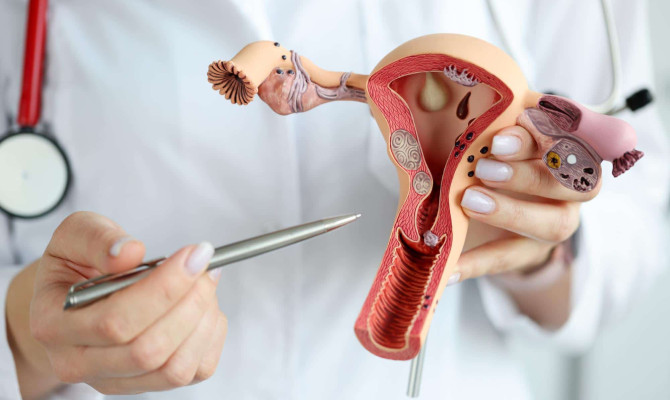Oral Cancer: Unveiling the Hidden Enemy Within

- Oral Cancer
- 22 Aug 2023
Overview
What is Oral cancer?
Oral cancer (Mouth cancer) is a debilitating disease that affects millions worldwide and continues to be a significant health concern. It can usually develop in any part of the mouth which can include the cheek, lips, gums, floor and the roof of the mouth. Initially presenting as a painless white patch, it later may turn reddish and may even ulcerate which are extremely painful. If neglected, oral cancer can soon invade other parts of your head and neck as well as the entire oral cavity.1Overview| Researched based study from Cancer.org.au

Prevalence
- The global burden of oral cancer is substantial, with significant geographic variations.
- It is more common in male with higher rate of prevalence in Caucasian ethnicity.
- Global average suggests almost 10 people out of 100,000 develop oral cancer.
Causes

Causes of Oral Cancer
Exploring the origins of oral cancer is a complex task, as it involves the interplay of genetic, environmental, and lifestyle factors.
- Tobacco is the single greatest cause of mouth cancer.
- Excessive and regular alcohol consumption and betel/areca nut chewing.
- New studies also suggest infection with Human Papilloma Virus is also an important risk factor.
- Family history of cancer.
- Factors causing skin cancer like extreme sun exposure
- Immunity problems brought on by an illness (such as AIDS/HIV) or medication
- Aging
- Leukoplakia and other Mouth lesions2Causes| Researched based study from Nidcr.nih.gov
Development
Development of Oral cancer
- Oral cancers are formed when certain cells on the lips or in the oral cavity undergo certain changes which have been termed as mutations.
- The cells in the body have DNA (Deoxyribonucleic acid) which basically guides a cells to perform its functions adequately. Every cell is guided by this DNA which limits the cell growth in both size and number. However these mutations remove these limits which results in the cells to drastically increase and therefore due to this increase, a mass is formed termed as tumor.
- As time progresses these tumor cells further invade surrounding areas such as throat and head or may travel to far off organs in the body and lodge there via the lymphatics or blood vessels.
- The alterations in squamous cells that result in mouth cancer are not well understood. But healthcare professional have identified risk factors as mentioned above which can cause or aggravate oral cancer.
Symptoms
Symptoms of Oral Cancer
Oral cancer presents with a diverse range of clinical features that may mimic benign conditions, leading to delayed diagnosis. Signs and symptoms include:3Symptoms| Researched based study from Hopkinsmedicine.org
- In front of a mirror notice any abnormal changes such as swelling or patches on the lips, tongue, gums, floor and room of the mouth. If possible check the throat also. If any doubt immediately contact a healthcare provider.
- Pre-existing oral lesions such as erythroplakia (red patches), leukoplakia (white patches) or a combination of both in your mouth and throat.
- Patient can often go asymptomatic for a long time with minimal or no associated pain. However pain particularly during swallowing can indicate spread of cancer to the throat.
- A change in voice may be noticed.
- Weight loss
- Persistent bad breath
- Lips sores may be commonly observed which often bleed on the gentlest of touch and often don’t heal.
Common warning signs
Warning sign of the utmost importance is the presence of a long lasting persistent rough patch with can often ulcerate along with few raised border that is minimally painful.
- On lips, the ulcer is more commonly associated with crust formation and dryness.
- In the pharynx it is more commonly observed as a mass.
- It can also be associated with a white patch.
- Loose teeth and bleeding gums are also commonly observed.
- Presence of a persistent ear pain.
- Feeling of numbness in the lip and chin.3Symptoms| Researched based study from Hopkinsmedicine.org
Diagnosis
Diagnosis of Oral cancer
An early diagnosis is essential in both knowing the extent of the disease which helps to stage it and also to essentially formulate a treatment plan for a better diagnosis. However since most patients approach a doctor once they experience pain and discomfort the prognosis becomes poor especially when cancer spread is evident.
You’re dentist might observe lesions during a routine checkup and they may follow you up for further investigations. They might also consult E.N.T (Ear, Nose, Throat) specialists and maxillofacial surgeons.
These tests may include:
Physical Examination
- The healthcare professional might look inside your mouth to inspect lesions. They might also examine throat and face to check for any spread of tumor.
Use of a laryngoscope
- An instrument which is used by a medical professional which has a mirror attached to a thin rod used to examine areas in the throat which can be difficult to observe.4Diagnosis| Researched based study from Clevelandclinic.org
Biopsy
- A surgeon might extract a small piece of tumor tissue and is observed under a microscope by a pathologist. This helps to assist in identifying the rate of cell growth, depth of invasion of cancer and whether there is presence of H.P.V (Human Papillomavirus).4Diagnosis| Researched based study from Clevelandclinic.org
Radiological investigations
- Which help to determine size and spread of the tumors.
Stages
Oral cancer Staging
Staging a cancer helps the cancers location, to see if the size has grown and to what extent, or as to determine the level of penetration to the surrounding tissues.
TNM Staging
Healthcare providers use this information in order to provide probable diagnosis and to formulate a treatment plan. As with most cancers of the body, oral cancers are also staged via TNM system.4Stages| Researched based study from Clevelandclinic.org
- T stands for the size of the tumor and also its extent locally.
- N refers to any spread to the local lymph node group.
- M refers to any metastasis, i.e. if the cancer cells from the tumor have spread to any other organ to the body.
Stages for oral cancer are
- T1 stage: Tumor in the oral cavity with size less than 2cm and a depth of invasion less than 5mm.
- T2 stage: Tumor where size is still less than 2 cm but depth of invasion more than 5mm.
- T3 stage: Tumor where size is between 2 to 4 cm with depth of invasion more than 10mm.
- T4 stage: Advanced stage with tumor size more than 4 cm.4Stages| Researched based study from Clevelandclinic.org
Treatment
Treatment of Oral Cancer
Depending on the type, location and spread of tumor, three main management options are commonly undertaken which include:
- Surgery
- Chemotherapy
- Radiotherapy
However medical professionals often consider multiple factors before suggesting a suitable treatment which may include:
- Age of the patient
- Gender
- Location of the tumor in oral cavity
- Whether the tumor has spread.
- Any prior treatment already started but halted in between.
Surgery
- The most commonly used method and is usually the treatment of choice. It may be used as the lone approach or a combination of surgery with radio or chemotherapy may be used.
- Depending on the size and local spread of the tumor, not only the tumor but part of the jaw and tongue may also be resected.5Treatment| Researched based study from Mayoclinic.org
Radiotherapy
- This method involves the use of high energy beams to the target site which kills the cancer cells or restrict them from growing.
- This method is often employed when cancer cells have spread to different organs of the body.
Chemotherapy
- It involves using anti-cancer drugs, they are generally the first line of treatment for patients which cannot undergo surgery.
Prevention
Prevention of oral cancer
- Stop smoking-Immediately stop consumption of tobacco in any form such as smoking/hookah, reduce or stop chewing paan/ betel nut/ areca nut as nicotine is a major risk factor for not only developing oral cancer but also further aggravating its spread.
- Limit alcohol consumption.
- Regular dental checkups should be the norm
- Get HPV vaccinated.
- Eat a healthy well balanced diet
Outlook
The Outlook
Oral cancer poses a considerable challenge to global health. By fostering awareness, understanding risk factors, promoting early detection, and emphasizing comprehensive oral healthcare, we can collectively work towards reducing the burden of this insidious disease and improve the lives of those affected by this devastating disease.
Any feedback on this article?
 This Articles content was accurate
This Articles content was accurate Very Informative Article
Very Informative Article I have a question or a comment
I have a question or a comment
 This article contains inaccurate content
This article contains inaccurate content This article was not helpful
This article was not helpful I have a question or a comment
I have a question or a comment
We appreciate your helpful feedback!
Checkout our social pages
References
-
Cancer Council
Mouth Cancer | Overview
-
National Institute of Dental and Craniofacial Research
Oral Cancer | Causes
-
John Hopkins Medicine
Oral Cavity Cancer | Symptoms
-
Cleveland Clinic
Oral Cancer | Diagnosis | Stages
-
Mayo Clinic
Mouth Cancer | Treatment



































